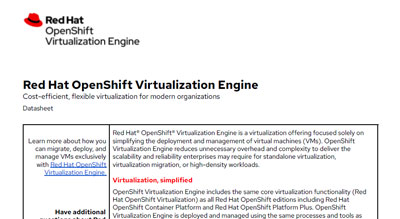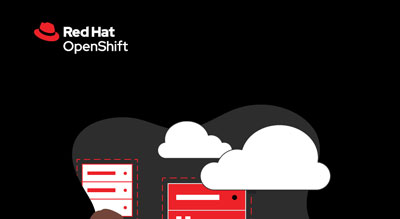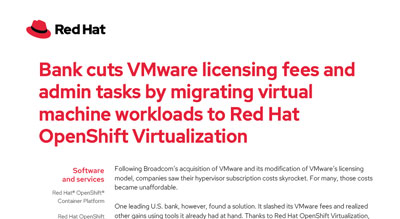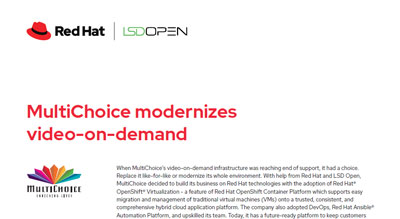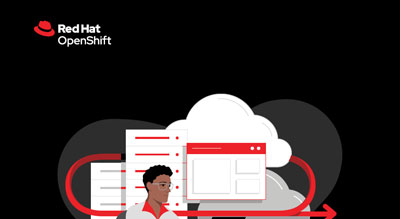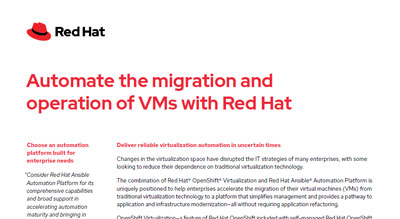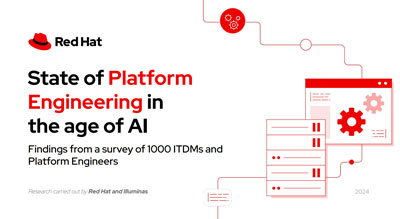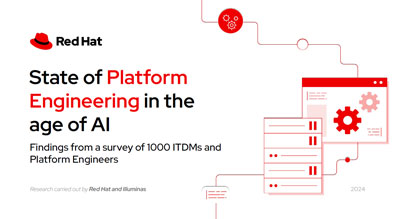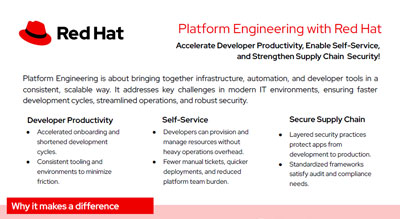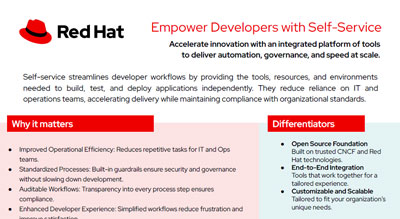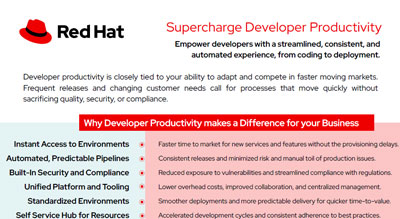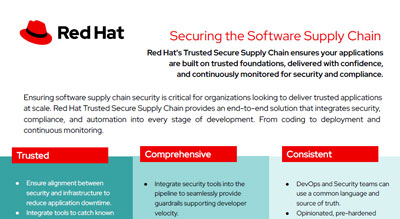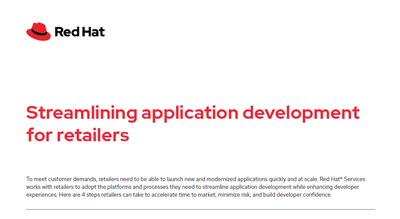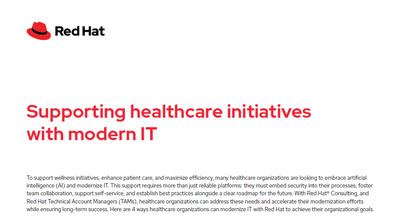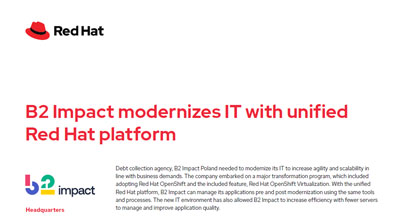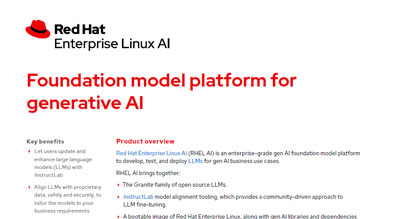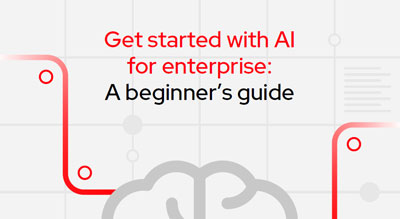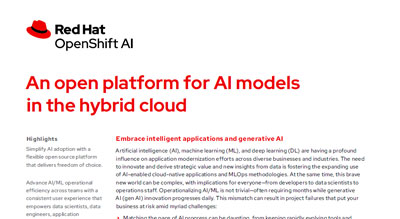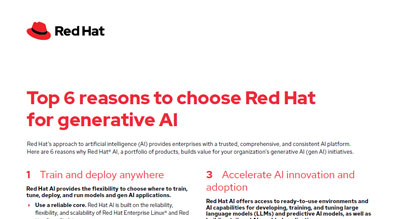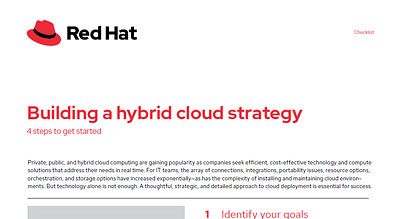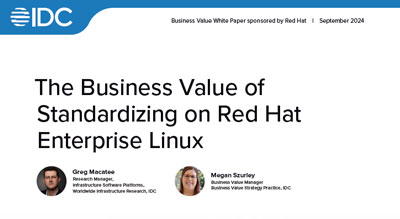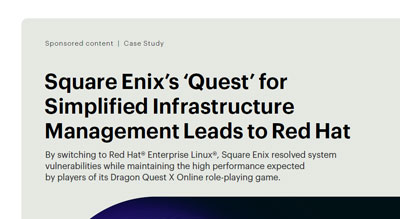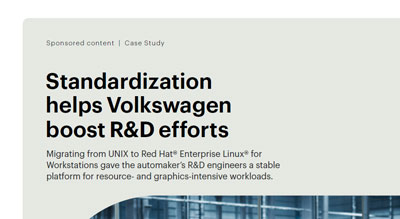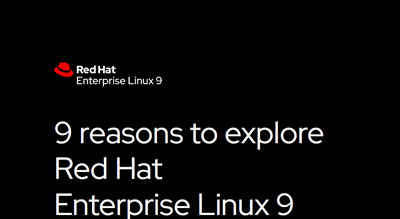Empowering teams with reliable technology
Red Hat and SHI are innovators in the open‑source space, providing solutions that help customers drive digital transformation, develop cloud‑native applications, integrate systems, automate processes, secure networks, manage complex environments, and deploy private AI solutions. By leveraging a combination of Red Hat's cutting‑edge technologies and SHI's award‑winning consulting services we enable our customers to maintain their competitive edge and deliver innovative solutions cloud-native infrastructure and solutions.

Benefits of Red Hat solutions through SHI
Cloud services
Red Hat is a world provider of enterprise open-source solutions that include Linux, cloud, container, and Kubernetes. We deliver solutions that help enterprises work across platforms and environments, from the core datacenter to the network edge.
Community powered
Using a community‑powered approach we deliver IT services on any infrastructure quickly and cost effectively with our broad portfolio of hybrid cloud infrastructure, application services, cloud‑native application development, and automation solutions.
Customer focused
We help customers standardize across digital environments. Our customer portal delivers comprehensive product documentation helps develop cloud‑native applications (integrate, automate, secure) and manage complex environments with award‑winning support and consulting services.
Mission critical automation
Over the past decade, the automation market has matured significantly, with rapid growth accelerated by the pandemic. Enterprises face challenges like skill shortages, escalating infrastructure complexity, and pressure to reduce operational costs. Additionally, the rise of AI has highlighted the need for a robust enterprise automation strategy as a foundation for successful AI adoption in IT Operations.
Over the past decade, the automation market has matured significantly, with rapid growth accelerated by the pandemic. Enterprises face challenges like skill shortages, escalating infrastructure complexity, and pressure to reduce operational costs. Additionally, the rise of AI has highlighted the need for a robust enterprise automation strategy as a foundation for successful AI adoption in IT Operations.
Virtualization
Red Hat OpenShift Virtualization, included with Red Hat OpenShift, reduces operational overhead by giving customers one platform for virtual machines (VMs) and containers. It aids migration and opens a path to modernization by bringing modern application development principles to VMs and allows teams to run VMs consistently across on-premise, at the edge, and in supported cloud environments.
Virtualization resources
AppDev platform
Application development can become complex, siloed, and inconsistent. Customers want to ensure that DevOps teams are not hindered by maintaining legacy applications, managing infrastructure, or integrating disparate tools, which limit their ability to innovate. They feel the pain of their developers spending too much time distracted by infrastructure and security issues and not being focused on building applications. They need a platform that provides on-demand services, abstracts away operational considerations, speeds time to production, and makes their developers more productive.
AppDev platform resources
Red Hat AI
Red Hat AI is built on the foundation of open-source technology, the adaptability of open hybrid-cloud environments, a vast ecosystem of complementary AI solutions, and extensive experience in helping customers leverage AI to deliver trust, choice, and consistency.
The comprehensive portfolio offers a wide array of solutions and services designed to support organizations throughout their entire AI journey. This includes Red Hat Enterprise Linux® AI, Red Hat’s AI-powered application platform Red Hat OpenShift® AI, AI-enabled tools like Lightspeed, and service offerings focused on developing the skills needed to create successful AI-driven applications.

Red Hat AI solutions
Server/Cloud OS
Server and cloud operating systems
As hybrid cloud grows, organizations are struggling to manage increasingly complex IT environments. Adopting a single server/cloud operating system that provides a uniform approach to deploying workloads is a decision all organizations must consider as they look to manage increasingly complex IT environments and the growing costs to maintain them.
Red Hat Enterprise Linux provide customers the ability to:
- Adopt a standardized operating environment
- Optimize and secure their operating system
- Maximize portability in the cloud
- Innovate across the hybrid cloud

 Canada (en)
Canada (en)
 Canada (fr)
Canada (fr)
 EU / EFTA
EU / EFTA
 United Kingdom
United Kingdom
 France
France
 India
India

